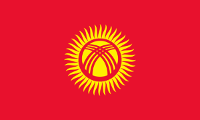Kyrgyz energy crisis
Kyrgyzstan on the brink of energy crisis
Times of Central Asia, The (Bishkek, Kyrgyzstan) - February 14, 2015
Written by Maria Levina
BISHKEK (TCA) — The situation in the energy system of Kyrgyzstan is difficult due to the failure of a transformer unit at the Toktogul hydropower plant (HPP), which led to a 300 MW decrease in the power plant’s total capacity of 1,200 MW.
According to the Ministry of Energy and Industry of Kyrgyzstan, the power capacity will continue to decline because of declining water levels in the Toktogul reservoir. By the end of February or in early March the HPP capacity may fall below 700 MW, which is almost twofold decrease.
Last year was very difficult for Kyrgyzstan’s energy sector. During the growing season, the volume of water inflow into the reservoir was about 7.2 billion compared to 8.8 billion cubic meters in 2013.
Growth in electricity consumption, water shortage and failure to comply with the limits of electricity consumption have led to an increase in electricity generation at the Toktogul HPP and increased water consumption. On January 1, 2015 there was 9.2 billion cubic meters of water in the Toktogul reservoir, and on February 10 — 7.7 billion cubic meters, a 32% decrease compared to this day in 2014.
Kyrgyzstan buys electricity in Kazakhstan to make up for the shortage, Kyrgyz Deputy Prime Minister Valery Dill said. This measure is necessary to save the water in the Toktogul reservoir.
At the same time, the Bishkek thermal electric power plant (TEP) is operating at full capacity of 360 megawatts.
The current situation has forced the Government to think about increasing the country’s power generating capacity. The total available capacity (about 14 billion kilowatt-hours per year) does not satisfy the economy. In recent years, domestic electricity consumption grew by 10% per year. Earlier, Kyrgyzstan exported electricity but now the country has to import it.
Savings
Due to the warm winter, Kyrgyzstan has managed to save electricity this year. In January Bishkek consumed 335.9 million kWh of electricity with the planned 373.2 million kWh. Last month consumers in the Chui oblast saved 14.5% of the electricity and in the Talas oblast - 18.4%.
According to the Energy Ministry, the number of outages has decreased by 6.6% in 2014 compared to 2013. In Bishkek, the number of accidents in electricity networks has decreased by 16%.
No changes
To develop the economy, it is necessary to build new generating facilities and reform the energy sector, said Dill.
The population sees no real progress in the construction of large hydro and thermal power plants as well as in modernization of the Bishkek TEP, Energy Minister Kubanichbek Turdubayev said.
A lot of criticism comes to the ministry about Kambar-Ata-1 and Kambar-Ata-2 HPP projects, as well as about the Upper Naryn HPP cascade, because people see no results.
Upper Naryn HPPs
According to the Upper Naryn HPPs JSC, 2.8 billion rubles will be spent for the construction of the Upper Naryn HPPs cascade in 2015. Construction of two plants for concrete production will start in March. A power line and a 35 kilometer road will also be constructed.
At the public hearing in Naryn, Russia’s RusHydro representatives said that construction of the Upper Naryn cascade will not harm the environment. The plan provides for a minimum area of flooding. Permanent sanitary control of water flows through the dam will be conducted during construction works, and after the completion the land will be reclaimed.
The Upper Naryn HPPs JSC is a direct operator of the construction of the Upper Naryn HPPs cascade. Shareholding in the company is divided between the RusHydro JSC (Russia) and the Power Plants JSC (Kyrgyzstan).
Small hydropower plants
The Government, in the long-term perspective, is going to increase power generation mainly due to construction of large HPPs and reconstruction of the TEPs in Bishkek and Osh. In the short and medium perspective, construction of small hydropower plants could help cope with the energy crisis in Kyrgyzstan.
Investors are ready to invest in small HPPs if the Government supports them through improved legislation and a favorable investment climate. The Korean Economic Development Fund is ready to invest more than $100 million in this sector.
Problems hindering the development of small hydropower energy in Kyrgyzstan include the lack of investment guarantees and strategic and long-term vision by the local authorities, and the lack of awareness of the population about the benefits of small HPPs.
Tariffs
Increase in electricity tariffs is inevitable, experts say. Obsolete equipment requires updating. Prices for it are rising, and funding from the state budget is not enough.
Kyrgyzstan has the lowest electricity tariffs in the world. If they rise, people will start saving electricity.
Copyright © The Times Of central Asia. All Rights Reserved. Provided by SyndiGate Media Inc. ( Syndigate.info).
No feedback yet
Form is loading...

